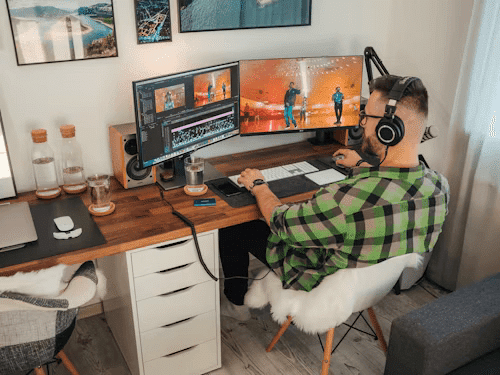
When it comes to live streaming video quality always gets a lot of attention. But what about the sound? A clear, professional voice is equally important for engaging your audience. Whether you’re playing live streaming games, podcasts, or even webinars. Using the right microphone for live streaming can make a world of difference. It is important to check the audio quality before going live. And make sure your microphone is working properly by using the microphone testing tool to fix any issues.
In this blog, we will explore the role of microphones in live streaming and share some tips for improving your sound quality.
Why is audio important in live streaming?
Now you understand the different types of microphones for live streaming Let’s look at some tips to improve your sound quality:
Optimize Your Microphone Setup
How your microphone is set up may affect its ability to pick up your voice. Keep it close to your face. But not too close to avoid distortion. If you use a desktop microphone for live streaming Consider using a pop filter to reduce the loud “p” and “b” sounds that can create noise.
Use Noise Reduction Software
Streaming from home or a busy place? Use noise reduction software to cut out unwanted background noise, this leaves your sound the central head of your flow provision amp cleanser.
Check Your Microphone Settings
Before going live, always do a sound check. Adjust your microphone gain settings to make sure your voice is too soft or too loud. Numerous streamers get the slip of exploiting the nonpayment settings without examining them. Regular sound checks ensure that your audio is always at its best.
Control the Room Acoustics
The room you stream from can impact audio quality. set surfaces get suit echoes and outcast reverb. Use soft materials like carpets curtains or acoustic foam panels to reduce these effects and Make a better audio environment for your microphone for live streaming.
Invest in a Good Audio Interface (For XLR Microphones)
If you are using an XLR microphone make sure you pair it with a quality audio connection. This leaves you further check across your sound levels and better go character. It may seem like a technical step but it is decisive for professional-grade streams.
Best Practices for Using Your Microphone
Mute When Not Speaking
If there are times during your stream when you are not talking be sure to mute your microphone. This reduces background noise and keeps your flow focused along the principal content.
Keep Backup Microphones
It’s always good to have a spare microphone for live streaming in case something goes wrong with your main setup. Technical issues can happen unpredictably, and a backup can prevent your stream from being disrupted.
Engage With Your Audience
Finally, remember that audio is part of how you interact with your audience. Speak clearly, avoid unnecessary background noise, and try to maintain a conversational tone. Good communication is key to keeping viewers engaged throughout your live stream.
結論
When it comes to live streaming, the good quality microphone can enhance your content. From choosing the right type of microphone for live streaming to fine-tuning your setup, these tips will ensure your audience hears you clear & loud. Whether you’re a fresher or a seasoned streamer, paying attention to your audio can make a significant impact on your streaming success.
Follow these tips, & start improving your stream’s audio quality today!
連絡先 マイクテスト for more information.
